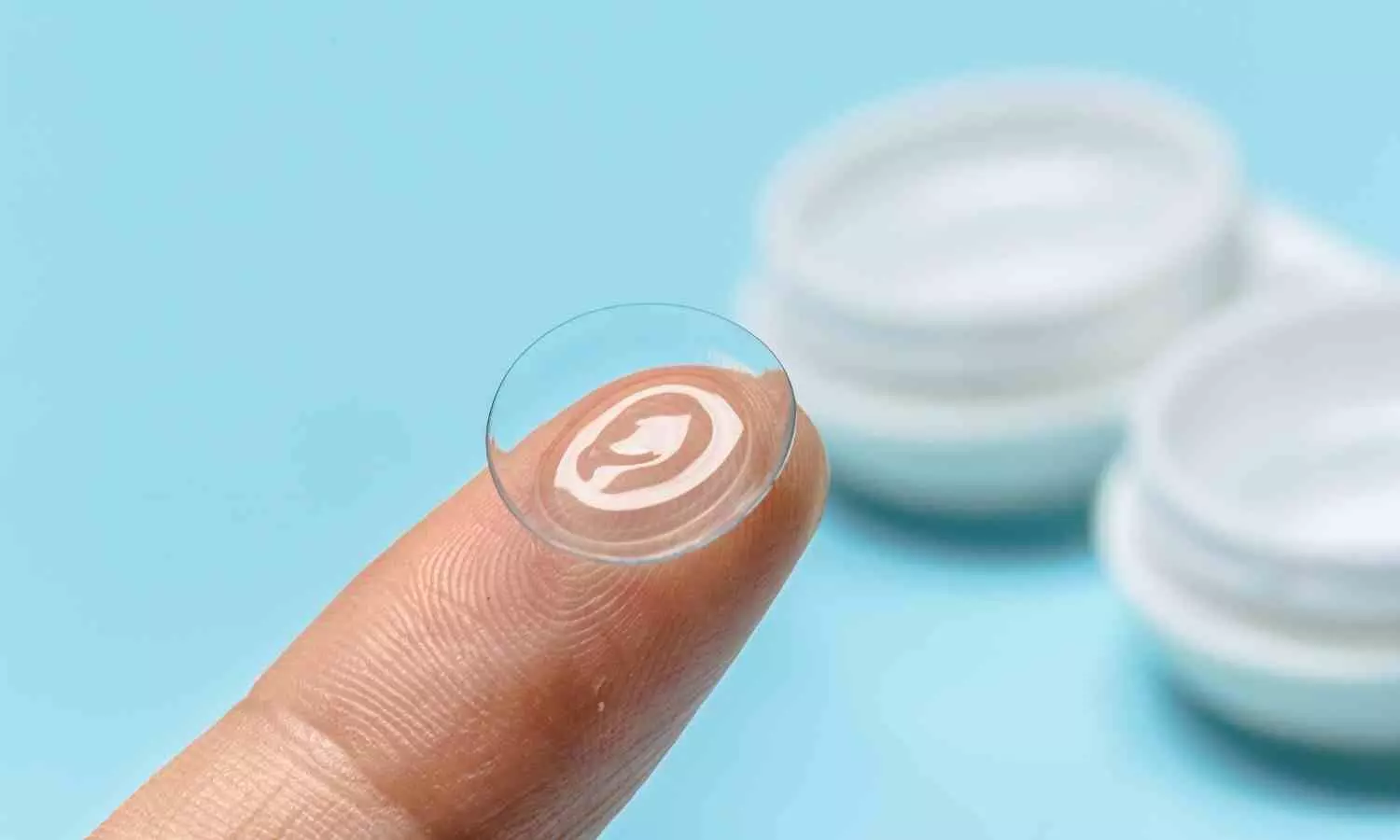Junk food ‘avoids advertising regulation’ with top level UK sports sponsorship
Powered by WPeMatico
Powered by WPeMatico
Powered by WPeMatico
Powered by WPeMatico
Powered by WPeMatico
Powered by WPeMatico

After decades of stalled national progress in reducing the rate of Sudden Unexpected Infant Death (SUID), a category of infant mortality that includes sudden infant death syndrome (SIDS), researchers at Rutgers Health have proposed an unexpected solution: Caffeine might protect babies by preventing dangerous drops in oxygen that may trigger deaths.
The hypothesis, published in the Journal of Perinatology, comes as the number of SUID cases has plateaued nationally at about 3,500 deaths a year for 25 years or one death for every 1000 live births. Despite an initial decline in the 1990s with the introduction of widespread education campaigns promoting back to sleep and other safe infant sleep recommendations by the American Academy of Pediatrics, SIDS, even on its own, remains the leading cause of death in infants between 1 and 12 months old.
“We’ve been concerned about why the rates haven’t changed,” said Thomas Hegyi, a neonatologist at Rutgers Robert Wood Johnson Medical School who led the research. “So, we wanted to explore new ways of approaching the challenge.”
That approach led Hegyi and Ostfeld to a striking realization: Virtually all known risk factors for SIDS and other sleep-related infant deaths, from stomach sleeping to maternal smoking to bed-sharing to preterm birth, have one thing in common. They are all associated with intermittent hypoxia, brief episodes where oxygen levels drop below 80%.
“I wondered, what can counter intermittent hypoxia?” Hegyi said. “Caffeine.”
The connection isn’t entirely theoretical. Neonatologists already use caffeine to treat apnea in premature infants, where it works as a respiratory stimulant. The drug has an excellent safety profile in babies, with minimal side effects even at high doses.
What makes caffeine particularly intriguing as a proposed preventive measure is how differently infants process it. While adults metabolize caffeine in about four hours, the half-life in newborns can be as long as 100 hours. Caffeine remains in an infant’s system for weeks, not hours.
This unique metabolism might explain a long-standing puzzle: why SIDS peaks between two and four months of age. As infants mature, they begin metabolizing caffeine more quickly. The researchers suggest caffeine consumed during pregnancy or passed through breast milk might provide early protection that wanes as metabolism speeds up.
The theory also could explain why breastfeeding appears to protect against SIDS.
“We hypothesize that the protection afforded by breast milk is, in part, due to caffeine,” wrote the researchers, noting caffeine readily passes from mothers to infants through breast milk.
Barbara Ostfeld, a professor at Rutgers Robert Wood Johnson Medical School, the program director of the SIDS Center of New Jersey and co-author of the paper, said if the theory proves true, any efforts to give infants caffeine would complement, not replace, existing risk reduction strategies.
“The idea isn’t that caffeine will replace risk-reduction behaviors,” Ostfeld said. “A baby dying from accidental suffocation, one component of SUID, is not likely to have benefited from caffeine but would have from such safe sleep practices as the elimination of pillows and other loose bedding from the infant’s sleep environment.”
The researchers plan to test their hypothesis by comparing caffeine levels in infants who died of SIDS with those who died from other causes, such as trauma or disease.
The research represents a fundamental shift in approaching SIDS prevention. While current strategies focus on eliminating environmental risks, this would be the first potential pharmaceutical intervention.
“For over 30 years, we’ve been educating New Jersey’s parents about adopting safe infant sleep practices. These efforts have contributed to our state rates being the second lowest in the US. Still, for various reasons, these proven recommendations are not universally adopted,” Ostfeld said. “This new hypothesis offers a way not just to address important risk factors but potentially intervene.”
Crucially, the researchers said this is hypothesis-generating research meant to inspire further study, not a recommendation for parents to give their babies caffeine. Any intervention would require extensive testing for safety and efficacy.
Still, in a field where progress has stagnated for decades, the possibility of a new approach offers hope.
As Hegyi put it, the goal is “to stimulate new thinking about a problem that has remained unchanged for 25 years.”
Reference:
Hegyi, T., Ostfeld, B.M. Reducing the risk of sudden unexpected infant death: the caffeine hypothesis. J Perinatol (2025). https://doi.org/10.1038/s41372-025-02333-x
Powered by WPeMatico

A new kind of smart contact lens is poised to revolutionize how we monitor eye health. Designed to work even when the eyes are closed, this stretchable lens combines pressure and movement sensing in one compact, wireless system. It offers a noninvasive, high-resolution way to track key ocular signals like intraocular pressure (IOP) and eye movement (EM)-factors critical for managing chronic conditions such as glaucoma. Successfully tested in both animal and human models, the lens provides accurate, real-time data to external devices without disrupting vision or comfort. This innovation could mark a turning point in how we detect and manage eye diseases.
Vision disorders impact over a billion people worldwide, with glaucoma being one of the most insidious due to its slow, symptomless progression. Key biomarkers like elevated IOP and irregular eye movement (EM) often go unnoticed, especially during sleep, when traditional open-eye instruments fall short. Nocturnal like intraocular pressure (IOP) spikes and rapid eye movement (REM)-related EM events are particularly important for diagnosing and preventing damage. Smart contact lenses have emerged as a promising solution, but most are limited to open-eye use and struggle to capture dual-modal data with precision. Because of these limitations, there’s a growing need for wearable devices that can deliver continuous, closed-eye monitoring with both accuracy and comfort.
Now, researchers from the University of Electronic Science and Technology of China have developed a next-generation smart contact lens that does exactly that. Published (DOI: 10.1038/s41378-025-00946-y) in Microsystems & Nanoengineering in May 2025, the study unveils a soft, stretchable bimodal contact lens (BCL) capable of simultaneously monitoring IOP and EM, even with the eyelids shut. By integrating capacitive and magnetic sensors into a single, wirelessly connected platform, the device enables round-the-clock tracking of eye health, offering a new pathway toward personalized, proactive care.
The BCL combines five layers of carefully engineered materials, including serpentine copper coils for pressure sensing and a neodymium-infused magnetic film for movement detection. This flexible structure allows the lens to contour naturally to the eye, avoiding discomfort and preserving vision. In rabbit models, the lens demonstrated high sensitivity to IOP fluctuations, with resolution as fine as 1 mmHg and superior signal stability even when eyes were closed. EM detection achieved over 97% accuracy in both lab models and human trials, thanks to an integrated glasses-mounted Tesla meter array. Data from the lens are wirelessly relayed to mobile devices, supporting real-time feedback. Importantly, biocompatibility testing confirmed the device is safe for extended wear, with no signs of inflammation or visual disruption. Together, these features present a rare combination of precision, comfort, and practicality for clinical and everyday use.
“This technology bridges a long-standing gap in ophthalmic care,” says Dr. Guang Yao, co-lead author of the study. “The ability to monitor both IOP and EM continuously—even when the eyes are closed-offers a more complete picture of eye health. It enables early intervention and more accurate tracking of disease progression, particularly for glaucoma patients. And because it’s wireless and wearable, it can be used comfortably at home, not just in clinics.”
Beyond glaucoma, this dual-sensing lens could prove useful in monitoring attention-related disorders, neurodegenerative conditions, and even sleep quality through EM patterns. Its wireless integration with mobile devices means patients can share data with physicians remotely, supporting telemedicine and reducing clinical visits. Future versions may incorporate drug delivery features, turning the lens into a closed-loop diagnostic and therapeutic system. With its customizable design and proven safety, the BCL platform opens up new possibilities for smart medical wearables in personalized healthcare.
Reference:
Gan, X., Yao, G., Li, C. et al. Closed-eye intraocular pressure and eye movement monitoring via a stretchable bimodal contact lens. Microsyst Nanoeng 11, 83 (2025). https://doi.org/10.1038/s41378-025-00946-y
Powered by WPeMatico

NMC Allows Appointing Medical MSc, PhD degree holders as 30 percent faculty in 5 depts
The National Medical Commission (NMC) Medical Institutions (Qualifications of Faculty) Regulations have allowed medical MSc, PhD degree holders to be appointed as faculty in Anatomy, Biochemistry, Physiology, Pharmacology, and Microbiology departments.
This follows a 2020 change that reduced non-medical faculty appointments in these departments to 15%, with some departments like Microbiology and Pharmacology restricted to 0%. The 2025 regulations restore non-medical faculty appointments to 30% in these subjects.
The Apex Medical Commission recently released the final Medical Institutions (Qualifications of Faculty) Regulations, 2025, in the official Gazette on June 30, 2025, and laid down the eligibility qualifications of medical teachers at medical institutes.
Relaxing the existing norms for appointing non-medical faculty in medical colleges, NMC has specified in these new regulations that non-MBBS holders can teach in Anatomy, Biochemistry, Physiology, Pharmacology, and Microbiology Departments in medical colleges if they possess a Master of Science or Doctor of Philosophy Degree in the respective fields of Medical Anatomy, Medical Biochemistry, Medical Physiology, Medical Pharmacology, and Medical Microbiology.
For more information, click on the link below:
NMC Allows Appointing Medical MSc, PhD degree holders as 30 percent faculty in 5 depts
Powered by WPeMatico

Amidst controversy over NMC inspection bribery scandal, demand for restructuring NMC escalates
Amidst the ongoing controversy surrounding the corruption case involving inspection-related malpractice in the medical education sector in India, the institutions have urged the Prime Minister of India (PMO) to ensure the strengthening of the National Medical Commission (NMC) for autonomous, transparent, and accountable medical education reform.
The Association of National Board Accredited Institutions (ANBAI) has urged PM Modi to restructure the Apex Medical Commission, use technology-based assessment methods, and align educational priorities with public health needs.
This representation comes after the Central Bureau of Investigation (CBI) busted a systemic corruption racket in the medical education sector and booked 34 individuals, including officials from the Union Health Ministry and the National Medical Commission (NMC), for their alleged involvement in manipulating the regulatory framework for private medical colleges. Among those named in the FIR are eight officials from the Union Health Ministry, a National Health Authority officer, and five doctors from the NMC’s inspection team. Prominent private medical college figures have also been implicated.
For more information, click on the link below:
Amidst controversy over NMC inspection bribery scandal, demand for restructuring NMC escalates
Powered by WPeMatico
Powered by WPeMatico
